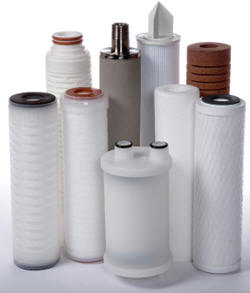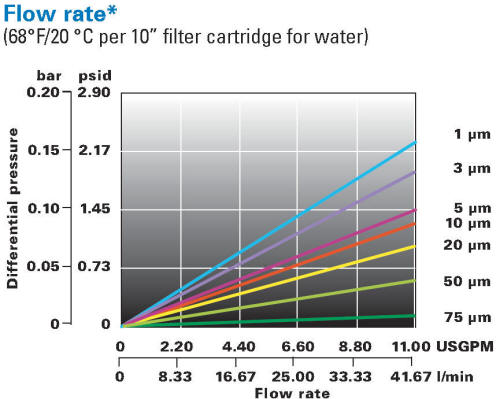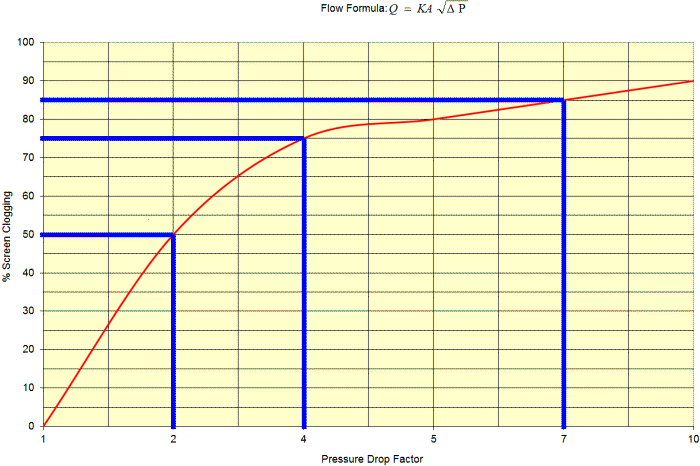How to Size a Liquid Filter Cartridge
call 908.362.9981 and speak with a filtration specialist for immediate assistance

Sizing a liquid filter cartridge is an important step in ensuring the efficient and effective filtration of liquids. The process involves determining the appropriate size and type of cartridge based on the specific properties of the liquid being filtered, as well as the desired level of filtration. In this article, we will provide a detailed overview of the steps involved to properly size a liquid filter cartridge.
Step 1: Identify Liquid Characteristics
The first step in sizing a liquid filter cartridge is to identify the liquid that will be filtered. This includes understanding the properties of the liquid, such as viscosity, temperature, and pH. Additionally, it is important to know the size and volume of contaminants to be removed from the liquid, as this will affect the type of filter cartridge that is needed.
The materials the filter cartridge is made of must be compatible with the liquid being filtered. Eaton’s industrial liquid filter cartridges are offered in polypropylene, PTFE, 316SS and titanium; high differential pressures and temperatures may necessitate using an alloy design whereas ultra-fine retention or a requirement for a cartridge made without glues, adhesives or wetting agents would require a PTFE membrane style cartridge.
Step 2: Consider the Pore Size
Once compatible filter materials have been identified, the next step is to consider the pore size of the filter cartridge. The pore size is the size of the openings in the filter media that allow liquid to pass through and it is expressed in microns. The smaller the pore size, the finer the filtration will be, however, it's important to note a smaller pore size can result in a higher pressure drop across the filter cartridge, which can negatively impact the overall performance of the filter or would require multiple cartridges to increase the surface area available.
Step 3: Determine the Flow Rate
The next step is to determine the flow rate of the liquid. This is the amount of liquid that will be passing through the filter cartridge per unit of time and usually expressed in gallons or liters per minute.
Refer to the filter cartridge specification sheet and webpage page to see the flow rate curves for that specific filter cartridge design and pore size. Initially you want to look at the maximum capacity for a given filter cartridge to see if it satisfies your applications flow rate. These flow curves are based upon 10” long filter cartridges and most of Eaton’s filter cartridges are available in lengths of 10” to 40”, so as long as the maximum flow rate shown on the curve is ≥ ¼ of the required flow rate, that specific cartridge design may be appropriate.
You can use the formula [(Flow Rate Required / Maximum Flow Rate per Cartridge) / (Cartridge Length / 10)]. The result is the theoretical number of filter cartridges required by overall length, round up for whole numbers.
| Application Flow Rate | Maximum Flow Rate per 10″ of Cartridge Length | ||
|---|---|---|---|
|
(GPM) 75 |
(GPM) 11 |
||
| Number of Cartridges Required Based Upon Their Length (Inches) | |||
| 10″ | 20″ | 30″ | 40″ |
| 6.8 | 3.4 | 2.3 | 1.7 |
| (Round-up to whole number) | |||
In the example above we could use a 7, 4, 3 or 2 multi-cartridge housing design. The most cost effective approach ends-up being a filter housing holding (4) 20" long cartridges based upon existing housing designs and cost of filter cartridges.
Below is an example of a typical Eaton Filtration filter cartridge flow curve, this one is for the LOFTREX style filter cartridge, which is available in 10” through 40” lengths. Therefore, it would be possible to use (4) 10” long or (1) 40” long cartridge for flow rates up to 44 GPM.

Step 4: Evaluate Pressure Drop
The pressure drop across the filter cartridge is the difference in pressure between the inlet and outlet of the filter. The pressure drop can be affected by several factors, including the pore size, flow rate, type of filter media and physical design of the filter cartridge. Whereas filter cartridges designed for surface filtration have a surface area relatively easy to calculate, pleated and depth filtration designs are a different story. The best way to compare filter cartridge designs, having the same porosity and length, is to compare the differential pressure for a given flow rate.
High differential pressure can result in a reduction in flow rate or result in an increase of the energy required to maintain a steady flow rate.
Example. The 10-micron cartridge will have a 0.73 PSI differential at a 6.6
GPM flow rate; at 8.8 GPM the differential pressure increases to about 1
PSI.
Referring to the example flow curve, note there is a corresponding differential pressure value. For a differential pressure value to be acceptable it needs to satisfy not only the applications design criteria but also fall within the maximum rated differential pressure for that particular filter cartridge design. When higher liquid temperatures reduce the maximum allowable differential pressure, you will often see several differential pressure figures associated with specific liquid temperatures.
Continuing with the LOFTREX meltblown polypropylene filter cartridge example, Eaton states in their specifications sheet that the maximum differential pressure is 36 PSI @ 70°F. If your liquid is >70°F the maximum differential pressure will be <36 PSI.
The rated differential pressure is based upon the initial "clean state" of a new cartridge; as particles become trapped within the filter cartridge, the open area available decreases and therefore the corresponding differential pressure increases exponentially.
The "clogging curve" below illustrates the exponential increase in differential pressure as the media becomes clogged. This is a reflection of the "increase in efficiency" related to the clogging of open area and potential of retaining finer particles.

In practice this means that, assuming a consistent particle size and volume, the amount of time required to become 75% clogged is only ½ the time required for the initial 50% clogging. Stated another way, once you reach 50% clogged, the clogging rate doubles.
Therefore, it is not a good idea to “undersize” your filter cartridge and operate near the maximum allowable differential pressure; ideally you would select a filter cartridge that would have an initial differential pressure @¼ of its maximum rated differential pressure so that you can fully utilize the area/volume of the cartridge while leaving sufficient reaction time to change-out the cartridges before the differential pressure gets too high.
In addition to the physical cost to replace filter cartridges, consider the frequency of replacement with regards to labor costs, down time and annual disposal costs. Although initially more expensive, using more or longer cartridges, or even an advanced design having a higher particle loading capacity, may reduce the frequency of change outs and your overall operating costs. Usually the more expensive "engineered" cartridges end-up being more cost-effective product than the less expensive versions that are replaced more frequently; it's just a little harder to quantify.
Step 5: Choose the Right Housing
The final step in sizing a liquid filter cartridge is to choose the right housing. The housing is the outer shell of the filter cartridge that holds the filter media in place. Filter housings can be fabricated from both plastic and alloy materials. The design used will depend on the specific properties of the liquid being filtered, tolerance for pressure drop, physical space available and application characteristics which might require a sanitary design, extended periods between cartridge replacement or certain materials of construction. Eaton’s filter cartridges are available with several different types of end seals to accommodate a variety of filter housing designs.
Since filter cartridges are available in lengths from 10” to 40”, there are a few ways you can approach higher flow rate applications.
Sticking with our LOFTREX example, let’s say your application required 50-micron retention for a flow rate of 25 GPM. That would be achievable using (3) 10” L cartridges or (1) 30” L cartridge; your choice directly effects the complexity of the filter housing design. In many ways a housing for a single 30” or 40” long cartridge would be easier to design and fabricate than a housing designed to route the flow through and properly seal 3 or more filter cartridges; but if you need to fit the filter system in a smaller footprint, you may have no choice but to use a multiple cartridge approach.
At the current time Eaton does not offer a standard filter cartridge housing design, but Hayward (polypropylene filter housing manufacturer) does; Hayward’s filter housing can hold up to (5) 30” long filter cartridges. So for us, if a customer requires ≤150” of filter cartridge length, we turn to the Hayward housing design (assuming the application is compatible with polypropylene) and provide a housing with (1 – 5) 30” long filter cartridges.




